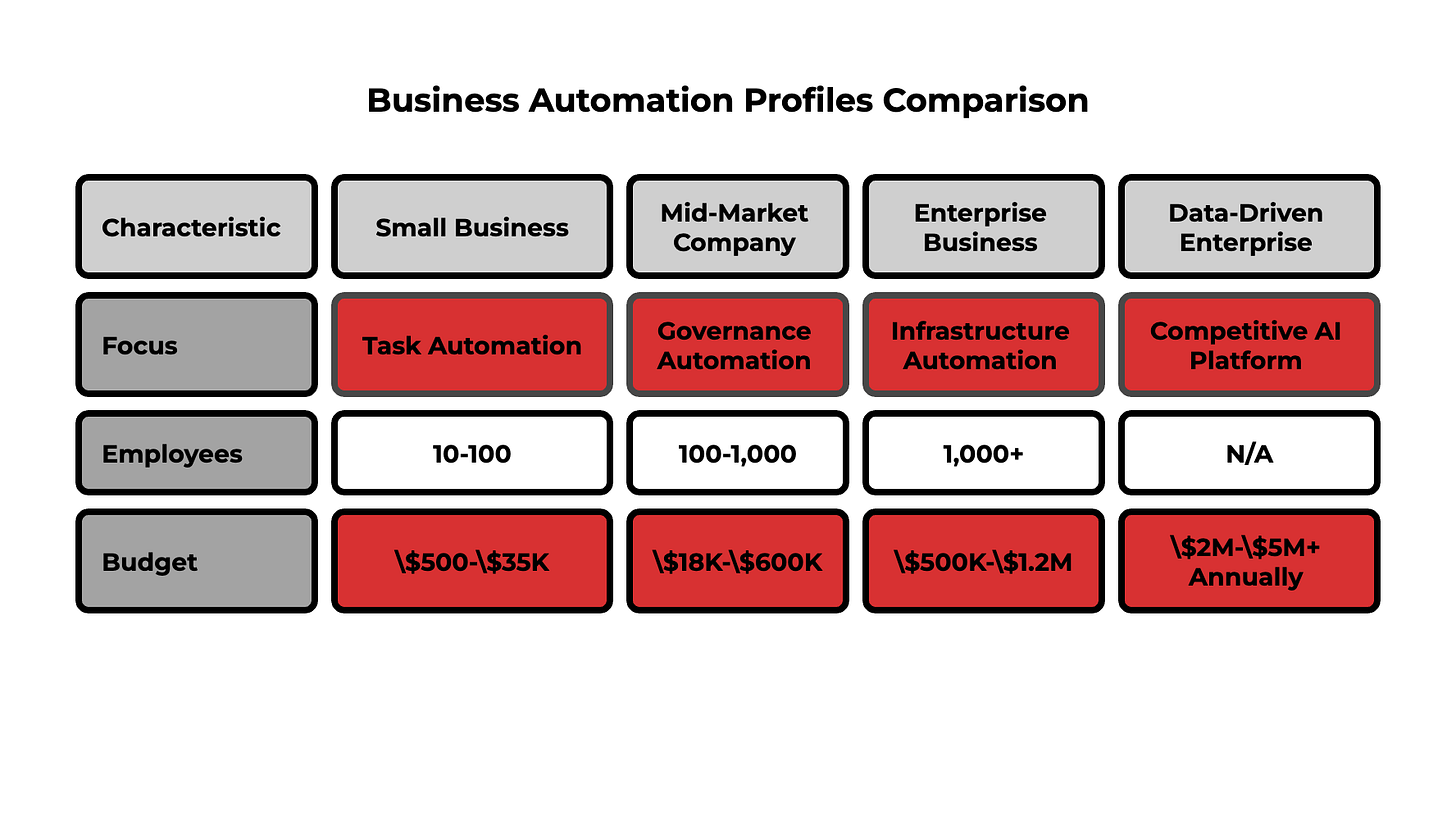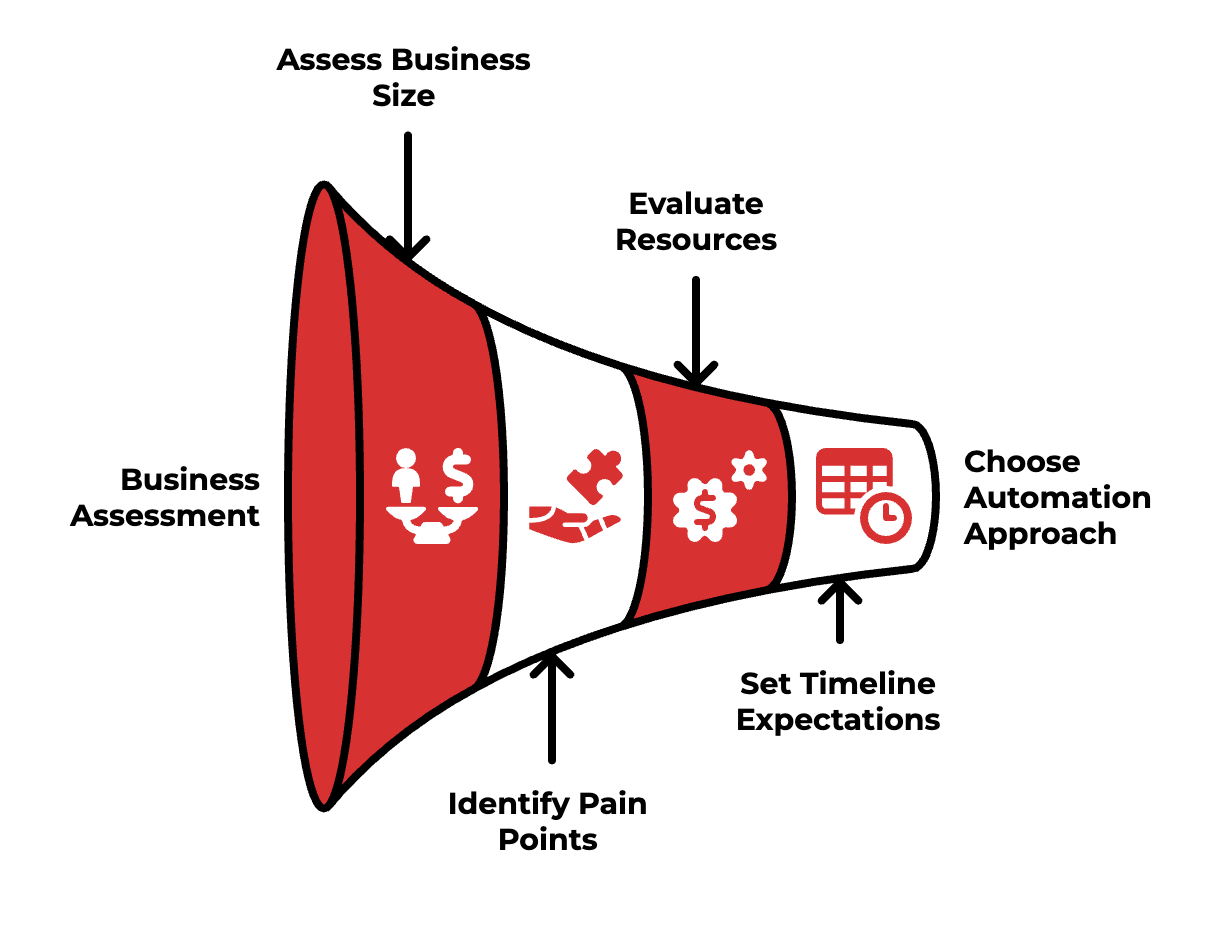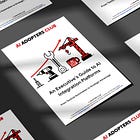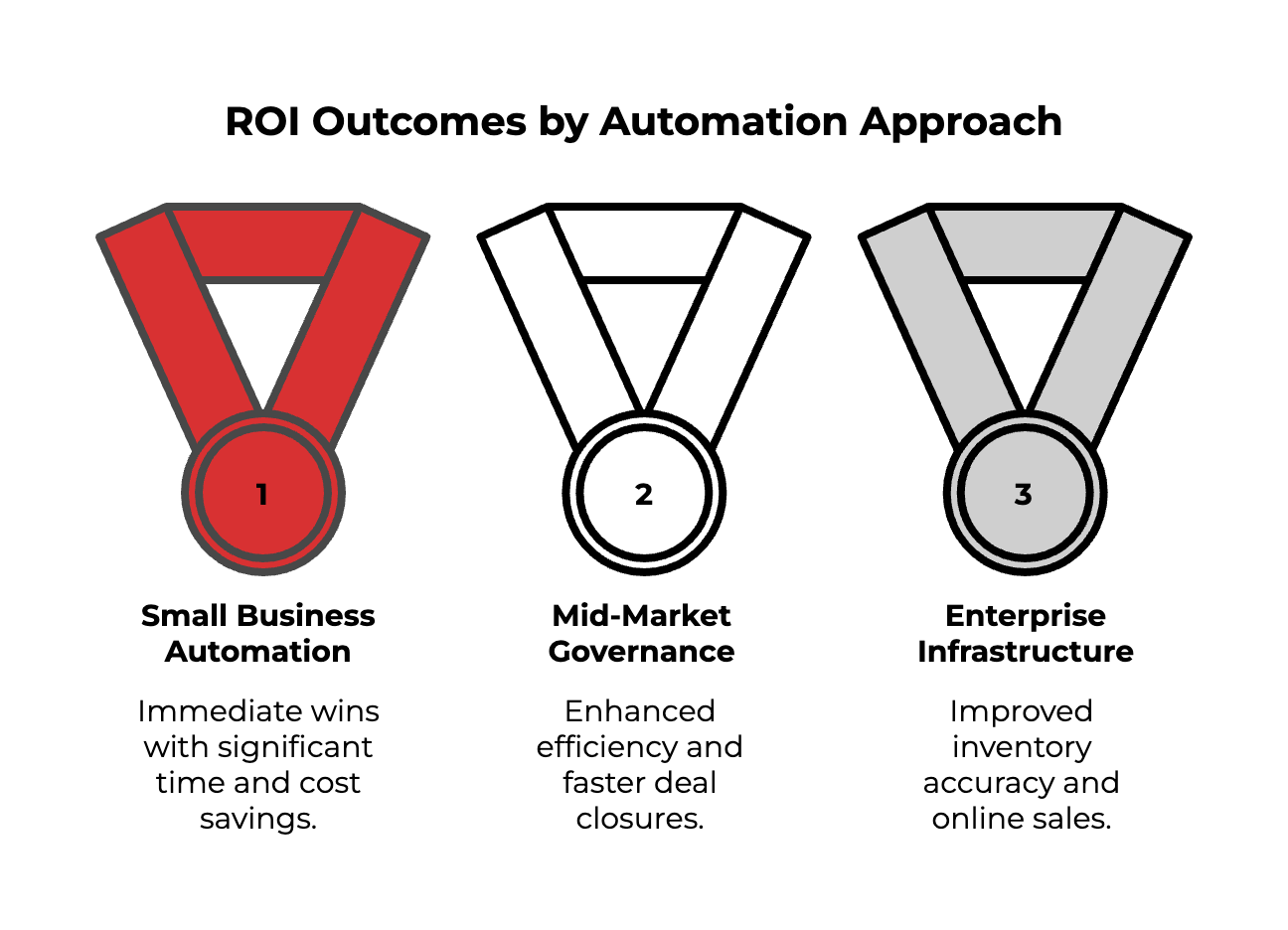Your Business Is Too Small for Enterprise AI Software (Use This Instead)
Match your business size and needs to the right AI integration approach
Hey Adopter,
Here's what separates smart executives from expensive mistakes: They understand that AI readiness isn't one-size-fits-all. It's about matching your business reality to the right economic model.
What you'll discover in this guide: Four distinct automation approaches optimized for different business sizes and needs. Remote saved $500,000 annually with simple automation tools. A global retailer achieved 99.5% inventory accuracy with enterprise data infrastructure. The key is knowing which model fits your business today.
Most companies get this wrong by copying what worked for someone else instead of choosing what works for their size, complexity, and goals.
The economics everyone gets wrong
Consultants sell one solution: expensive enterprise platforms. The reality is there are four fundamentally different economic models, each optimized for specific business profiles.
Small business automation costs per task but saves $25-50 per hour in salary costs.
Mid-market governance costs per user but delivers compliance and cross-department coordination.
Enterprise infrastructure costs per compute cycle but creates real-time competitive advantages.
Data-driven platforms cost millions but generate new revenue streams worth tens of millions.
The critical insight: Your business size and complexity determine which economic model makes sense. A 50-person company trying to build enterprise infrastructure is like buying a semi-truck for grocery runs.
Small business: The task automation approach
Perfect for companies with 10-100 employees and simple processes
Investment: $500-$35,000 annually
Best for: Departmental efficiency and individual productivity
Economic logic: Pay pennies per task to save dollars per hour
Is this you?
Most of your processes happen within single departments
You have clear, repetitive manual tasks (data entry, lead routing, file organization)
Compliance requirements are minimal
You want results in 30-90 days, not months
Toyota of Orlando eliminated 20+ hours weekly of manual lead processing during a CRM outage using a $29/month tool. Bolt removed 800 manual follow-ups, freeing up two full workdays per HR person monthly.
The math: Manual tasks cost $25-50 per hour in loaded salary. Automation costs $0.001-$0.005 per task.
Tool selection: Make.com offers better unit economics for high-volume automation. Zapier provides broader app connectivity but can scale to $311,880 annually at enterprise volumes.
Key question to ask: What manual tasks do our people complain about most, and can we eliminate them this month?
Mid-market: The governance automation approach
Ideal for companies with 100-1,000 employees and cross-department processes
Investment: $18,000-$600,000 annually
Best for: Standardized business processes and compliance
Economic logic: Pay per user for unlimited governed workflows
Is this you?
Your processes span multiple departments (HR, IT, Finance, Sales)
You need audit trails and compliance documentation
Manual handoffs between teams create bottlenecks and errors
You want predictable costs and enterprise-grade security
Professional services firms achieve 100% new hire equipment readiness on day one. Manufacturers reduce deal closure time by 30% with automated quote-to-cash workflows spanning sales, legal, and finance.
The governance trade-off: Microsoft Power Automate at $15/user/month provides unlimited flows but creates ecosystem lock-in. Salesforce Flow bundles automation with CRM licensing.
Strategic approach: Hybrid model works best - Make.com or Zapier for departmental tasks, plus Power Automate or Salesforce Flow for critical cross-department workflows.
Key questions to ask: Which of our core business processes require multiple people to touch them? Where do we lose deals or delay projects because of manual handoffs?
Enterprise: The infrastructure automation approach
For companies with 1,000+ employees and complex system landscapes
Investment: $500,000-$1.2M annually including talent
Best for: Real-time data synchronization and system integration
Economic logic: Pay for compute and engineering talent to create reusable data architecture
Is this you?
You have 50+ core business systems that need to talk to each other
You need sub-second data updates across systems
Your business depends on real-time inventory, pricing, or customer data
You're integrating legacy systems with modern cloud applications
A global logistics firm reduced partner onboarding from 3 months to 2 weeks using MuleSoft. A retailer achieved 99.5% inventory accuracy across channels, enabling "buy online, pick up in store" for 25% of online sales.
Talent economics: Software becomes 20-30% of costs. The remaining 70-80% is specialized engineering talent earning $150,000+ who can architect distributed systems.
Value creation model: You're building reusable APIs and event streams that accelerate every future integration project. Each new connection becomes easier, not harder.
Key questions to ask: Do our systems have conflicting data about the same customers or orders? Are we losing business because different parts of our company can't see real-time information?
Data-driven enterprise: The platform automation approach
For organizations where data is the core competitive asset
Investment: $2M-$5M+ annually
Best for: Custom AI models and proprietary competitive advantages
Economic logic: Massive upfront investment to create defensible business moats
Is this you?
Your competitive advantage comes from proprietary algorithms or predictions
You have data science teams building custom models
You're trying to predict customer behavior, optimize pricing, or automate decisions
Your business model depends on learning from your unique data
A global CPG company improved demand forecasting by 25%, cutting inventory costs by millions. A subscription service built churn prediction with 85% accuracy, reducing monthly churn by 1.5 percentage points and saving millions in recurring revenue.
The data flywheel: Better AI attracts more users, generating more data, enabling better AI. This creates defensible competitive moats that competitors can't easily replicate.
Organizational reality: 60-70% of costs are multi-disciplinary data teams including engineers, scientists, and product managers. The platform enables them to be dramatically more productive.
Key questions to ask: Could we build a better product if we could predict what customers want? Are our competitors winning because they know something about the market that we don't?
How to choose your approach right now
Start with these diagnostic questions:
Business size and complexity
How many employees do you have?
How many core business systems do you use?
Do your processes typically stay within departments or cross multiple teams?
Pain points and goals
What manual work costs you the most in time and salary?
Do you need real-time data, or is daily/weekly updates sufficient?
Are you trying to improve existing processes or build new competitive capabilities?
Resources and timeline
What's your realistic budget for automation this year?
Do you have technical talent, or do you need no-code solutions?
Do you want results in weeks, months, or are you planning multi-year initiatives?
Budget reality check by approach
Small business automation: $5,000-$25,000 annually
Mid-market governance: $50,000-$200,000 annually
Enterprise infrastructure: $500,000+ annually
Data-driven platform: $2,000,000+ annually
Critical insight: Each approach has different success metrics. Small business measures hours saved. Mid-market measures process reliability. Enterprise measures system performance. Data-driven measures competitive advantage.
Want the Complete Strategic Roadmap? Download Our Executive Guide
What's included:
4-stage framework with exact cost breakdowns ($500 to $5M+)
Real case studies and 90-day implementation blueprints
Vendor recommendations and ROI calculators
Perfect for:
Executives evaluating AI investments
IT leaders planning automation strategies
Operations managers choosing between $29 tools and million-dollar platforms
Three economic optimization principles
1. Match your ambition to your reality
A recruitment firm automated paperwork and candidate evaluation, cutting phone calls per hire from 50 to just 2. They didn't need enterprise infrastructure - they needed task automation.
2. Build governance appropriate to your scale
Use service accounts instead of personal credentials from day one. Document what you build. But don't over-engineer governance for simple departmental workflows.
3. Measure what matters for your approach
Track hours saved for task automation. Process reliability for governance. System performance for infrastructure. Revenue impact for competitive platforms.
Your 90-day selection process
Week 1-2: Use the diagnostic questions to identify your business profile
Week 3-4: Choose tools that match your approach and existing tech stack
Week 5-8: Build pilot workflows that prove the economic model
Week 9-12: Use results to justify expanded investment in your chosen approach
The key insight: There's no "ladder" to climb. There's only the right approach for your business today. A 50-person startup using task automation can be more successful than a 5,000-person enterprise with the wrong platform.
Pick the approach that matches your reality. You can always evolve as your business grows, but you need results now with the resources you have.
Adapt & Create,
Kamil








